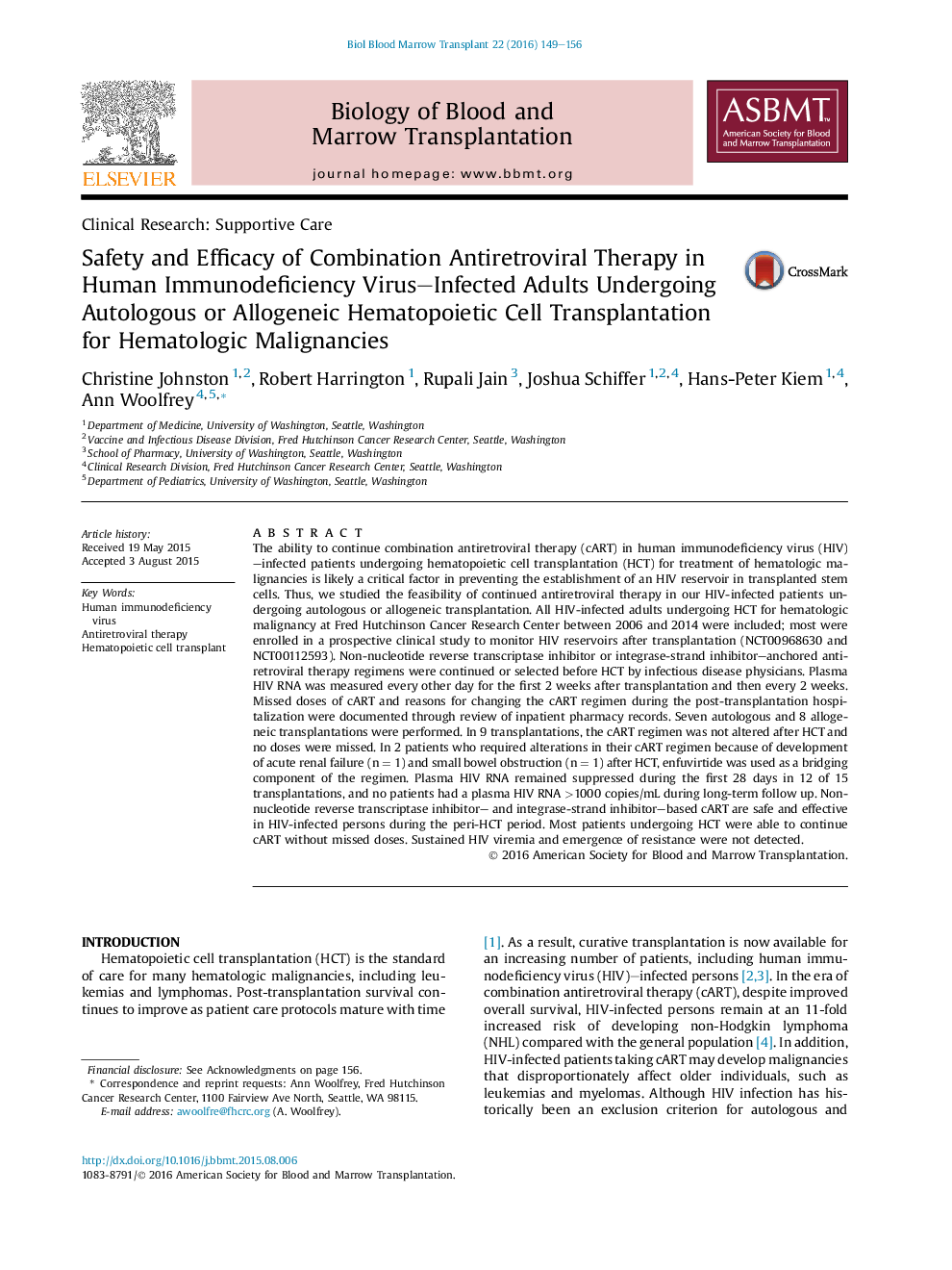| کد مقاله | کد نشریه | سال انتشار | مقاله انگلیسی | نسخه تمام متن |
|---|---|---|---|---|
| 2101418 | 1546259 | 2016 | 8 صفحه PDF | دانلود رایگان |
• Continuous combination antiretroviral therapy is safe and feasible for human immunodeficiency virus–infected patients undergoing hematopoietic cell transplantation
• Most patients undergoing hematopoietic cell transplantation were able to continue combination antiretroviral therapy without missed doses
• Sustained human immunodeficiency viremia and emergence of resistance were not detected
• Transplantation-related infections were common; acquired immune deficiency syndrome opportunistic infections were rare
The ability to continue combination antiretroviral therapy (cART) in human immunodeficiency virus (HIV)–infected patients undergoing hematopoietic cell transplantation (HCT) for treatment of hematologic malignancies is likely a critical factor in preventing the establishment of an HIV reservoir in transplanted stem cells. Thus, we studied the feasibility of continued antiretroviral therapy in our HIV-infected patients undergoing autologous or allogeneic transplantation. All HIV-infected adults undergoing HCT for hematologic malignancy at Fred Hutchinson Cancer Research Center between 2006 and 2014 were included; most were enrolled in a prospective clinical study to monitor HIV reservoirs after transplantation (NCT00968630 and NCT00112593). Non-nucleotide reverse transcriptase inhibitor or integrase-strand inhibitor–anchored antiretroviral therapy regimens were continued or selected before HCT by infectious disease physicians. Plasma HIV RNA was measured every other day for the first 2 weeks after transplantation and then every 2 weeks. Missed doses of cART and reasons for changing the cART regimen during the post-transplantation hospitalization were documented through review of inpatient pharmacy records. Seven autologous and 8 allogeneic transplantations were performed. In 9 transplantations, the cART regimen was not altered after HCT and no doses were missed. In 2 patients who required alterations in their cART regimen because of development of acute renal failure (n = 1) and small bowel obstruction (n = 1) after HCT, enfuvirtide was used as a bridging component of the regimen. Plasma HIV RNA remained suppressed during the first 28 days in 12 of 15 transplantations, and no patients had a plasma HIV RNA >1000 copies/mL during long-term follow up. Non-nucleotide reverse transcriptase inhibitor– and integrase-strand inhibitor–based cART are safe and effective in HIV-infected persons during the peri-HCT period. Most patients undergoing HCT were able to continue cART without missed doses. Sustained HIV viremia and emergence of resistance were not detected.
Journal: - Volume 22, Issue 1, January 2016, Pages 149–156
